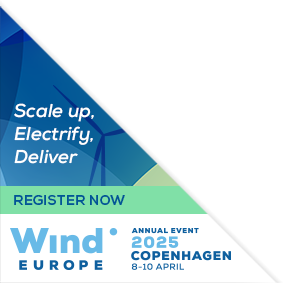Posters
Siblings:
ProceedingsProgrammeSpeakersPostersContent PartnersPowering the FutureMarkets TheatreResearch & Innovation in actionStudent programmePresenters dashboardCome meet the poster presenters to ask them questions and discuss their work
We would like to invite you to come and see the posters at our upcoming conference. The posters will showcase a diverse range of research topics, and will give delegates an opportunity to engage with the authors and learn more about their work. Whether you are a seasoned researcher or simply curious about the latest developments in your field, we believe that the posters will offer something of interest to everyone. So please join us at the conference and take advantage of this opportunity to learn and engage with your peers in the academic community. We look forward to seeing you there!

PO075: Detecting Damages in Chain and Synthetic Mooring Lines of Floating Wind Turbines
Rune Schlanbusch, Deputy Research Director, Norwegian Research Centre - NORCE AS
Abstract
The use of semi-submersible floaters as a support system for Floating Offshore Wind Turbines (FOWTs) is gaining popularity due to their lower installation infrastructure requirements, regardless of water depth. These floaters are secured to the seabed using chains and synthetic fibre rope mooring lines. Detecting damage in these mooring lines early is crucial, as failures can disrupt the normal operation of FOWTs, pose significant risks, and lead to collateral damage. Currently, damage detection relies primarily on remote operating vehicles (ROVs), and alternative methods have been minimally explored, limited to chains. This research introduces efficient and automated methods for remote monitoring of FOWT mooring lines. These methods leverage data from sensors installed on the mooring lines, resulting in a substantial reduction in inspection costs and a continuous stream of integrity data, as opposed to sporadic and expensive ROV inspections. The proposed methods involve a one-time training phase where selected features capture the healthy dynamics of FOWTs under various environmental conditions (ECs), creating a suitable subspace. During the inspection phase, damage detection is achieved by assessing whether the dynamics from an unknown health state fit within this subspace. The subspace is defined by statistical AutoRegressive models, with their parameters serving as features. The research is validated through simulations on two full-scale semi-submersible floater-based FOWTs: a 5MW system with chain mooring lines and a 10MW system supported by the OO-STAR wind floater (owned by Bouygues Travaux Publics) with synthetic fibre mooring lines. Simulated fatigue damages are introduced by varying stiffness reductions along the entire mooring line. The results demonstrate a 100% success rate in damage detection for both chain and synthetic lines, up to a depth of 200 meters. Importantly, these methods exhibit light computational requirements and require only one or two accelerometers for implementation.










